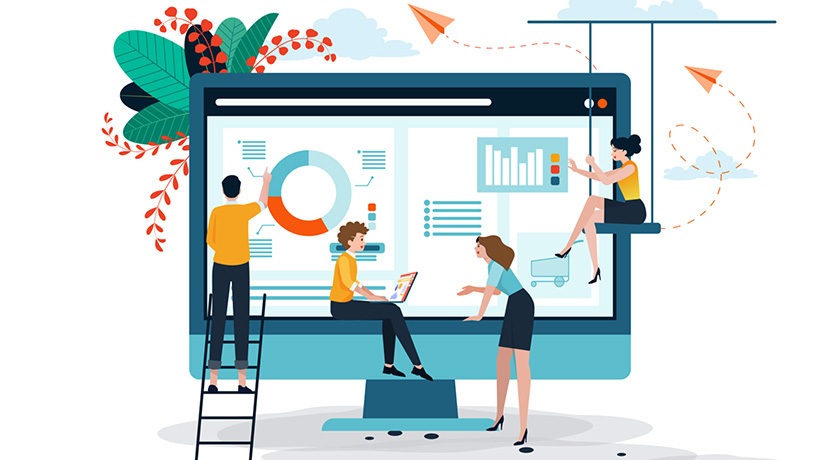Discover The 8 Digital Disruptions In Corporate Learning
Can the learning industry be behind? Get geared up for a paradigm shift in corporate learning. Digital disruptions are leading to innovations in corporate learning, and companies are ready to spend on digital infrastructure. Let’s find out more about how digital disruptions are shaking up the corporate learning landscape.
With the rise of tech-savvy, millennial brains across organizations and the rapid advancement of digital technology, corporate companies are forced to rethink how their employees should learn.
Here are 8 key disruptions occurring in corporate learning:
1. Variety Of Learning Experiences
We are moving from page-turning courses to other formats including, videos, learning apps, micro-sized learning experiences, immersive learning experiences, adaptive learning experiences, gamified learning experiences, intelligent AI-powered learning platforms, etc.
2. Spaced Learning
Millennial brains prefer spaced learning. Spaced learning allows employees to learn for a few minutes at a time, reflect on what they have learned, then spend another few minutes learning at a different time.
3. Consumption Of Learning
For millennial brains, the learning content should not be just online, but it should be online plus offline plus mobile. They want to free themselves from any constraints and consume learning at their own pace, place, and convenience.
Since the consumption of content on YouTube, Amazon Prime, Netflix, Hot Star, etc. is on the rise, learners feel that the consumption of learning should be synonymous with that experience.
So, how we can achieve this?
Design and package your learning content in such a way that it streams across devices, across platforms, and can also be downloaded for offline viewing in low/no bandwidth areas. In short, knock off all barriers that fall between your learners and the learning content.
Remember, easier consumption of learning leads to the better digestion of learning, and in turn leads to the better learning fitness of your employees.
4. Size Of Learning
Nowadays, our learners have short attention spans and demand small-sized learning nuggets. Our learners now look at learning more like a playlist, which can contain multiple tracks/parts, but each should be micro in size. In short, “abridged content, amplified learning” is what they wish for nowadays. For example, if you create learning for sales, safety, or warehouse personnel, it is always better to prescribe small nuggets that they can consume as needed.
5. Intelligent Learning Assistance
Artificial Intelligence (AI) has already entered corporate learning. AI is redefining the ease of learning assistance and support available to users while on the job. Learners want learning integrated within work to get quick access to information/learning, and faster resolutions to performance query without causing interruptions to their work.
Think of an AI-powered Virtual Learning assistant in the form of a chatbot that never tires and is available 24/7. This intelligent learning assistant can: respond precisely to your complex performance queries, precisely refresh your knowledge on required topics when needed, fast fetch accurate information from internal knowledge repositories, self-learn from the pattern of queries being put in by all users to become more intelligent with time, auto-create/update knowledge graphs based on the updates being made to the internal knowledge repositories to serve users better, etc.
6. Use Of Small Devices
Making learning accessible on smaller screens, such as smartphones and tablets, allows your learning to move with your learners.
One of the ways you can personalize learning is to make it available on users’ personal devices. Corporate companies are now looking at mobile devices as a medium to create the always-on learning experience for their employees/staff.
Let’s consider this, almost every business now has two versions of its website: desktop and mobile. And you will agree that more user traffic comes from the mobile side. Similarly, having mobile-friendly learning content for learners will boost the consumption of learning.
7. Demand For Informal Learning
Formal learning activities/programs are surely required to create a skill base in a structured and disciplined way. However, if the learning is bound only to formal environments, it can impact the consumption of learning.
Have you considered that your employees are already overwhelmed at work? So, how much time can they set aside for learning every day? Not much, right? So, can you afford to offer hour-long courses that can only to be consumed formally? If yes, your employee learning may get a big hit. So, think of making learning informal and available on-demand.
8. Next-Generation Learning Management Systems
In addition to the traditional capabilities, Learning Management Systems take up the following:
Learning Management Systems track only the formal training resources and events, which do not provide a complete picture of your employee learning. Today, in the workplace, many informal coaching sessions happen, and users attend some learning events online. Can Learning Management Systems track this as well and create an all-inclusive view of employees' learning?
Next, can Learning Management System be empowered further to act as a learning platform that auto-collects data about employee performance, from the internal performance management system and other tools used by employees to do job/work activities, to analyze how well employees fared over a period of time? And can they also auto-recommend learning resources to employees to overcome performance deficiencies?
For example, if your employee’s job is to process invoices in the invoicing system, then the learning platform should auto-collect data on: how many invoices were processed, how much time it took to process each invoice, what type of errors were made during the invoice processing, etc., over a period of time and auto-recommend learning resources in case of any performance deficiencies.
So, think again whether Learning Management Systems can be empowered to also act as a talent transformation and employee reskilling platform.
Think of an all-in-one platform that not only stores and tracks your course catalog, but also allows employees to do much more by themselves. For example, create learning paths and learning playlists for themselves, see more analytics about their learning activities, offer flexibility to consume content on the device of choice, explore what their fellow colleagues are learning, communicate with experts on their learning queries, see ratings and badges assigned to top performers at the unit and organization level, offer playgrounds to get hands-on practice for key skills, and so on.








